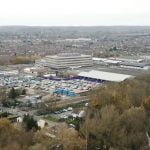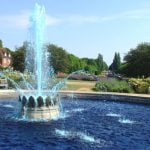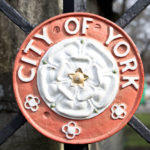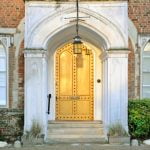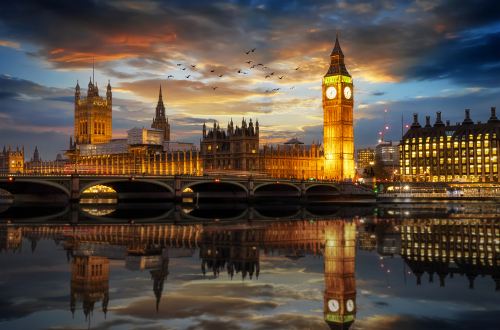
A quick guide to the City of Westminster!
Overview
The City of Westminster is an inner borough of London, in southeast England. It is situated on the north bank of the River Thames at the heart of London’s West End. The City of Westminster is flanked to the west by Kensington and Chelsea and to the east by the City of London. In 1965, the Metropolitan Boroughs of St Marylebone, Paddington and Westminster, were merged to form the City of Westminster. The City of Westminster has an area of just over 21 km2 and one of the highest concentrations of visitor attractions and historic landmarks throughout London. These include the world-renowned Palace of Westminster, Buckingham Palace, Westminster Abbey and Westminster Cathedral. At the 2011 UK Census, the population of the City was recorded as 219,396.
For more than 500 years, Westminster and the City of London were geographically, quite distinct. However, during the 16th century, housing and other development began to infill the land between them, eventually absorbing nearby villages such as Marylebone and Kensington, and gradually creating the vast Greater London that exists today.
A Very Brief History
The origins of the City of Westminster pre-date the Norman Conquest of England. It was in the mid-11th century, that Edward the Confessor began the construction of an abbey at Westminster. Between the Abbey and the River Thames, he built a palace, thereby guaranteeing that the seat of Government would be fixed at Westminster, which lay west of the old walled City of London. In December 1066, William the Conqueror was crowned in Westminster Abbey, and since then, every English monarch has been crowned there, except for Edward V and Edward VIII.
Between 1087 and 1100, William Rufus (William II) oversaw the building of Westminster Hall, just outside Westminster. In 1365, the Jewel Tower was built to house Edward III’s treasure. In 1512, following a devastating fire, Westminster Palace ceased being the royal residence. After restoration, the Lords would regularly meet in Westminster Palace. And around 1547, the Commons began to meet there too, thus it was designated as ‘The Houses of Parliament’.
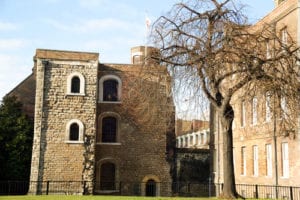
The medieval Jewel Tower at the ‘Tower of London’ Editorial Credit: Shutterstock.com
Henry VIII’s dissolution of the monasteries saw the Abbey at Westminster dissolved in 1540, although the former church is still called Westminster Abbey. Also in 1540, the church was briefly granted cathedral status when the Diocese of Westminster was created. However, in 1550, the Diocese of Westminster was abolished but Westminster retained its city status. In 1585, the Westminster Court of Burgesses was formed to govern the Westminster area, which had previously been under the Abbot’s control. The Court of Burgesses and Liberty continued in existence until 1900, when the Metropolitan Borough of Westminster was created.
In 1698, Whitehall Palace was destroyed by a fire, only Banqueting House survived. It had been the royal residence, since the times of Henry VIII in the early 1500s. The route to the south from the Palace was widened in the 18th century following its destruction. The street is now recognised as the centre of the Government for the UK and is lined with numerous departments and ministries. The name ‘Whitehall’ is now a metonym, which covers all reference to the British civil service and government, as well as the geographic area.
In the late 17th century, more streets with grandiose houses were laid out, especially in the Pall Mall area. The area took its name from the game Paille-maille (aka Pell-mell), which was similar to croquet. Reputedly, the area was a favoured haunt of King Charles II, a well-known proponent of the game.
In 1703, Buckingham Palace was built for the Duke of Buckingham. It was refurbished during the early 19th century by renowned architect John Nash for Queen Victoria, who moved to the new royal residence at the beginning of her reign in 1837. In 1711, 10 Downing Street was built by royal consent and presented to Prime Minister Robert Walpole as a gift by George II. He accepted the gift on behalf of the nation and in 1732 and it was designated as the official residence of the British Prime Minister.
In 1834, Westminster Palace complex was destroyed by fire, although Westminster Hall survived. In January 1836, Sir Charles Barry, an eminent architect of the time, won the commission to design the new ‘Houses of Parliament’, that was to replace the old Palace. In 1958, an enormous bell was installed in the building’s clocktower. The bell was dubbed ‘Big Ben’ by locals, which was reputedly named after Sir Benjamin Hall who was the Chief Civil Engineer for the building works. The new parliamentary building wasn’t finally completed until 1868, with the schedule being well overdue and over budget.
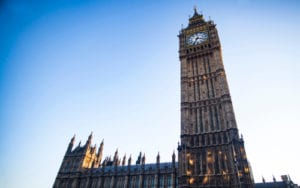
Westminster’s iconic clocktower that houses ‘Big Ben’
The City of Westminster has been long associated with immigration to the London area. In the 17th century, groups of French Huguenots fleeing religious persecutions established themselves in the Soho district. In the late 19th century, this was followed by Italian migration to the area. Cypriots and Chinese arrived in numbers to Westminster in the early to the mid-20th century. In the second half of the 20th century, South Asians, Thais, Arabs and Afro-Caribbeans, all came to take up residence in the borough. Ethnic minorities account for more than 20% of the total population of the City of Westminster.
Did you know?
- The official name of Westminster Abbey is actually the Collegiate Church of St. Peter in Westminister
- Westminister Bridge, opened in 1862, is the oldest surviving road crossing of the River Thames, in Central London
- The official name of ‘The Houses of Parliament’ is actually ‘The Palace of Westminister’
- ‘Big Ben’ the bell in the clocktower of the Palace of Westminister, weighs in at a hefty 13.7 tonnes
Getting Around!
Getting to and around the City of Westminster is relatively easy but there are inevitably high volumes of residents, workers, commuters and tourists.
There are four National Rail terminal stations that are situated in the City of Westminster; Charing Cross on the South Eastern Main Line, Marylebone on the Chiltern Main Line, Paddington on the Great Western Main Line and London Victoria on the Brighton and Chatham Main Line. Ten of the eleven London Underground lines pass through the City of Westminster and there is a total of 27 tube stations in the borough. The Waterloo and City Line is the only tube line that isn’t routed through Westminster.
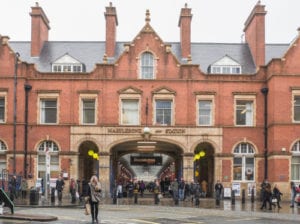
Exterior to Marylebone Train Station Editorial Credit: Shutterstock.com
Other travel options would include the metro, tram or bus but driving around central London by car is generally not recommended, as it’s often faster and cheaper to use public transport, as congestion and emission charges can often apply.
Things to see and do!
The City of Westminster has more notable tourist sights per km2 than anywhere else in London, the UK, and arguably the planet. The Palace of Westminster is one of London’s four World Heritage Sites. A good number of the Westminster’s most iconic tourist attractions, along with its award-winning galleries and a few places you might not have heard of, are listed below:
- Covent Garden – London Transport Museum & Royal Opera House
- Hyde Park – Serpentine Gallery, Speakers’ Corner, Hyde Park Corner & Apsley House
- Marylebone – Madame Tussauds, Oxford Street, Selfridges, Sherlock Holmes Museum & Wallace Collection
- Mayfair – Handel House Museum & Royal Academy
- Millbank – Tate Britain
- Regent’s Park – London Zoo
- St James’s – Buckingham Palace, Queen’s Gallery, Royal Mews, Fortnum & Mason & St James’s Palace
- St John’s Wood – Abbey Road Studios & Lord’s Cricket Ground
- Soho – Carnaby Street, Leicester Square, Piccadilly Circus, Ripley’s Believe it or Not!, Regent Street, Trafalgar Square, National Gallery, National Portrait Gallery & Nelson’s Column
- South Kensington – Albert Memorial & Royal Albert Hall
- Strand – Royal Courts of Justice, Somerset House, Courtauld Gallery, St Mary le Strand & St Clement Danes
- Victoria – Westminster Cathedral
- Victoria Embankment – Cleopatra’s Needle
- Westminster – Palace of Westminster (Houses of Parliament), Big Ben, Jewel Tower, Westminster Abbey & Westminster Abbey Museum
- Whitehall- Banqueting House, Churchill War Rooms, The Cenotaph, Clarence House, Downing Street & Horse Guard Parade
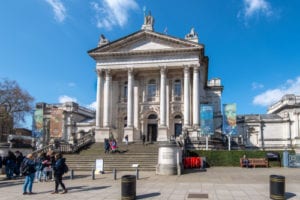
The impressive Entrance to ‘Tate Britain’ Gallery Editorial Credit: Shutterstock.com
Where to stay?
Westminster’s central location makes it an ideal place to stay. There’s a place to stay for all budgets as accommodation ranges from budget hostels to luxury hotels. An alternative would be to rent an apartment – most have no minimum let period. While the majority of apartments cater to couples, some can accommodate up to 6 people. Indicative prices for the most readily available types of accommodation/per night, based on 2 adults sharing are as follows:
Hostel: £30 – £50
B & B/Guesthouse/Basic Hotel: £80 – £150
3/4/5 Star Hotel: £150 – £600
Apartments vary greatly based on no. of available berths, location and standard
If you enjoyed this guide and found it helpful, be sure to click the link below.
https://www.fiveminutesspare.com/travel/category/uk/london/


